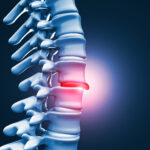
Facet Joint Syndrome
The Varied Symptoms of Facet Joint Syndrome
The manifestations of facet joint syndrome are diverse, contingent on the location of the affected joint and its impact on nerve roots. In instances where the neck’s joints are affected, headaches and limitations in head and neck movement might surface. Degenerated joints in the lower back can give rise to discomfort or stiffness in the back, buttocks, or thighs. The inflamed facet joints might even induce painful muscle spasms.





Diagnostics and Treatment: A Holistic Approach
Diagnosing facet joint syndrome necessitates a thorough physical examination coupled with symptom analysis. An MRI scan is often employed to provide a clearer understanding of the problem. Additionally, diagnostic facet injections called Medial Branch Blocks are frequently utilized to confirm the diagnosis. These injections contain anesthetic agents offering temporary relief from discomfort. If the patient experiences relief, it strongly points towards the facet joint as the source of pain.
Treatment for facet joint syndrome often commences conservatively, encompassing rest and ice or heat therapy. Other measures might involve:
- Anti-inflammatory medications
- Physical therapy
- Employing a back or neck brace
For more pronounced symptoms, pain medications could be prescribed. Direct injections of steroids into the facet joints could also provide extended pain relief. In severe cases a minimally invasive procedure called Radiofrequency Ablation may be used to provide sustained relief.
Facet joint syndrome is indeed a multifaceted condition, demanding a comprehensive understanding and tailored approaches for effective management.

Book an appointment
"*" indicates required fields











